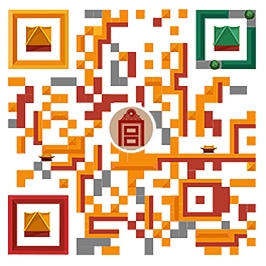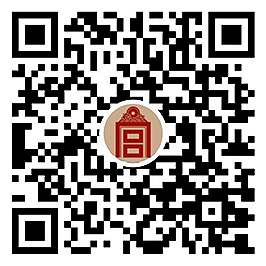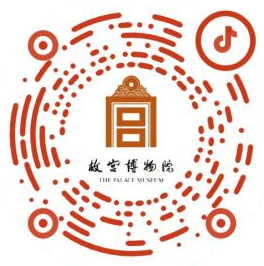5月3日-24日,杜伦大学考古系师生四人在故宫博物院进行了为期三周的考古学交流活动。 活动期间,杜伦大学副校长考布里奇教授、国际关系院长多诺霍教授以及考古系系主任斯基德教授来京考察了此次交流活动,并与故宫博物院就下一步具体合作进行了协商。此次活动,是双方继2016年12月在上海签署谅解备忘录以来,首次进行具体的学术交流活动,也是双方对展开下一步具体合作进行会晤。
强强联合 优势互补
长期以来,故宫博物院在陶瓷研究与古代窑址的调查方面投入了极大的力量,也取得了丰硕的成果。杜伦大学不仅收藏了波斯湾出土的数千片龙泉青瓷,而且长期在中东地区从事考古发掘。5月9日,杜伦大学副校长一行在故宫博物院副院长娄玮的陪同下来到慈宁花园东侧院考古发掘现场参观,慰问了此次来华进行学术交流的杜伦大学师生,并接受了采访。
娄玮副院长陪同杜伦大学副院长参观慈东考古工地
杜伦大学副校长考布里奇教授接受我院采访
记者:我想请考布里奇教授谈一谈作为英国现代考古学的发源地之一,贵校考古系过往的主要成就与特点?
杜伦大学副校长考布里奇教授(下文简称考教授):杜伦大学拥有世界上最好的考古系之一,目前在QS体系中名列世界第四。在杜伦大学,除传统学院考古学以外,我们还有配合基建的社会考古服务,所以我们的考古学科可以从学科的科研领域,一直覆盖到这个学科的文化诠释以及现实意义。我们的考古学研究覆盖区域也非常全面,比如欧洲,南、北美洲,还有南亚都是我们的专长。此次来到中国,来到故宫这样一个人类艺术和建筑的圣殿我们感到十分荣幸。与这里的同事们进行考古学交流活动,共同建立一个重要的交流平台十分重要。
记者:结合杜伦大学与故宫博物院的特点,考布里奇教授能否谈谈双方联合培养人才方面的前景与希望?
考教授:杜伦是世界上排名前一百的大学。我们拥有科学部、社会科学部和文科部三方面的优秀师资。故宫有着优秀中国传统文化、文物的研究。这些是我们非常需要学习的。所以我认为我们(的合作)处在了一个非常重要的阶段,也是一个绝佳的时机。我们希望与故宫建立亲密的伙伴关系。具体就考古领域而言,我们可以从中了解中国(考古)传统以及如何诠释中国艺术品;同时我们也希望自己能够带来一些英国考古专业方面的特长。双方现在处在一个非常好的阶段,我们可以交流看法,互相学习。这也是我们杜伦大学考古团队此行的目的。
记者:自古以来,不同地区、不同民族之间的交流都很活跃。丝绸之路就是古代东西方文化交流的见证。贵校考古系已经在中东各地进行了考古发掘与研究,取得了许多研究成果。此次与故宫的合作,在“一带一路”的框架下,中东地区的考古发掘与研究也是合作的重点内容之一。请问考布里奇教授,在世界视野下进行古代文化交流研究是否在未来相当长时期内仍将是杜伦大学支持的考古学研究的内容之一?
考教授:绝对是的。我们似乎总认为全球化是一个最近才发生的事情,但放眼整个历史、丝绸之路,这些都显示了这种互相之间的联系由来已久。尤其是最近,我们考古系的一位成员近期在西班牙又发现了中国的陶瓷。故宫博物院与杜伦大学已经通过印度的考古发现,还有你所提到的中东地区的“一带一路”研究联系在了一起。中东考古是杜伦大学具有专业优势的领域。了解东方和西方长期以来的各种层面的往来联系非常重要。对于今天的杜伦大学而言,我们有成为世界性的大学的雄心壮志。一个全球性的大学必须认识到研究中国文化的重要性。所以故宫建立伙伴关系对我们而言非常重要,我们也希望这对故宫博物院而言也同等重要。
记者:最后请问考布里奇教授对双方的合作,还有什么样的期待?
考教授:我们非常欢迎故宫的同事们到杜伦来。杜伦大学有一所非常重要的东方博物馆。我们希望能够借助这里收藏的中国艺术品,尤其是青瓷收藏,开展学术研究,同时帮助我们了解我们的(收藏)历史。
杜伦大学副校长考布里奇教授一行还参观了故宫博物院大高玄殿的古建修复以及考古发掘现场的工作。工作负责人向来宾们介绍了中国传统建筑修缮保护的基本工序。结合大高玄殿的实际情况,讲解了故宫博物院以科研课题为带动的修缮方式,将考古学方法应用于古代建筑灰被修复的历史分析中,开创了“屋顶考古学”的研究方法。
最后,故宫博物院院长单霁翔、副院长娄玮与杜伦大学副校长一行进行会谈,双方就下一步在“一带一路”框架下进行中东波斯湾地区的联合考古,联合培养考古学、博物馆学人才方面达成了共识。
理论、实际相结合,中英考古学方法论短长
此次为期二十天的故宫-杜伦考古学交流活动主要分为:专家论坛、遗址参观,以及发掘现场实地记录比较三方面进行。
首先,5月5日,故宫博物院前任院长、考古学家张忠培先生与杜伦大学考古系师生进行座谈。张先生介绍了故宫博物院建立考古研究所的初衷,讲解了考古发掘与遗址保护的关系以及故宫考古的方法特点——“最大程度保护、最小程度干预”的“微创”发掘。最后,张先生从三方面着重讲述了中国考古学的方法论。首先介绍了以李济、梁思永、夏鼐等先生为代表的中国考古学方法论形成期;然后,通过夏鼐先生在甘肃宁定先阳洼湾的发掘为入手点,讲解了层位学以黄土高原为环境背景在中国诞生、发展的始末;最后结合生物学概念,讲述了中国考古学的谱系类型学。最后,张先生总结道“中国考古学有两把尺子:层位学、谱系类型学。这是我们中国考古学比较成功的方法论,是长期以来,从做西方考古学学生,而将其理论结合中国实际,做出的一些变化和改革,最终创造了自己的一些东西。”
随后,杜伦大学考古系师生在京期间参观了故宫大高玄殿的古建修复与考古发掘现场,参观了北京市考古所主持的圆明园清代园林遗址的考古发掘工作。通过以上参观了解了当前新兴的明、清宫殿群落考古的实际情况。
5月13日-18日,故宫-杜伦考古学交流团队一行八人赴浙江省考察。参观、走访了龙泉地区金村——大窑古代窑业文化群落,其中重点参观了枫洞岩古窑遗址、小梅窑遗址、西口窑址,参观了龙泉市博物馆以及现代青瓷文化园。在杭州,交流团队一行参观了浙江省博物馆、上林湖后四岙龙窑遗址。这些窑址、博物馆的参观帮助交流团成员了解了浙江地区从唐五代至明清的青瓷发展脉络,并对中国青瓷在不同历史时期的生产规模、文化影响有了更加具体的理解。此次浙江考察所习得的中国青瓷文化为此奠定了必要的物质研究基础和知识交流平台。
故宫-杜伦大学考古学交流活动参观浙江省龙泉市大窑遗址
最后,故宫-杜伦考古学交流活动的核心内容:跟随故宫博物院院内考古工地工作进度,进行了十个工作日的中、英两种发掘记录,比较其中异同,从而探讨双方考古学方法。2015年,慈宁宫花园东侧院明清建筑遗址配合更换消防管道工程开始立,展开了与保护、展示结合的考古发掘工作。此次交流活动记录了T0202、T0203两个探方2017年度的发掘工作。5月22日,故宫-杜伦双方考古工作者就此次开展了中英考古学方法交流的座谈会。会上,杜伦大学德里克·卡耐教授就此次交流活动所见的情况从工作方法、发掘目的、具体布方方式、记录方式、文物采集过程、地层关系梳理、考古整理的计量统计学等十方面比较中、英双方考古学方法上的异同。英国记录以量化表格为基础,重视标准化,方便实操人员流动性大的发掘工作。中国记录以探方日记为基础,重视发掘过程的细节变化,有助于整理阶段重建对发掘对象的认识过程。故宫博物院考古所李季所长简短概括了中国考古规程的形成特点,即服务于不同时期中国考古工作的工作重心而逐渐发展、完善;总结了此次考古学交流活动的三点收获。一是,英方注重系统性、逻辑性的整体思考,中方的思维传统是更讲求实用性,双方的可以实现完美的结合;二是,中英两种发掘记录相结合可以同时满足现代信息数字化录入与中国考古学实际应用两方面的需求;三是,双方考古学方法产生于不同的工作习惯、工作环境,没有对错、好坏之分,关键是考古工作者要采取开放的态度,丰富考古学获取信息的手段,促进学科发展建设。总之,这次考古学交流活动是一次宝贵的磨合切磋的机会,为双方下一步在波斯湾地区开展联合考古考察、发掘活动打下了基础。
杜伦大学师生与故宫考古所工作人员在慈东花园发掘遗址合影
为期二十天的故宫-杜伦大学考古学交流活动圆满结束。此次活动为双方在未来开展“一带一路”框架下的联合考古奠定了理论与方法的合作基础;为进一步开展中国古代物质文化交流研究,尤其是以陶瓷贸易为首的研究合作累积了科研资料;是未来双方联合培养考古学、博物馆学人才的一次演练。
To the Silk Road
— The Archaeology Communications between the Palace Museum and Durham University
From 3rd to 24th May, a team of archaeologists from Durham University, UK, visited the Palace Museum in Beijing in order to exchange and discuss archaeological techniques and methodologies and for a study trip to the south of China. On 9th May, the Durham University delegation, including Professor Stuart Corbridge, Vice-Chancellor and warden of Durham University, Professor Daniel Donoghue, Dean of the International Office, and Professor Robin Skeates, Head of the Archaeology Department, visited the Palace Museum to meet with the members of the archaeological team. Further discussions between the Palace Museum and Durham University were then conducted. This three-week communication and collaboration visit is the first step in a larger program based around the memorandum of understanding between the Palace Museum and Durham University which includes academic exchanges, collaborative research and museum exhibitions, among other cultural activities. It is a ministerial-level project between China and the UK signed on 6th December 2016 in Shanghai.
Join together, explore the world
On 9th May, accompanied by Professor Lou Wei, the Deputy Director of the Palace Museum, the Durham University delegation visited the Cining Palace Garden archaeology site within the Palace Museum, and met the archaeology team from Durham University. Presented below is an interview with Professor Stuart Corbridge conducted by the Palace Museum at the archaeology site:
Question 1: What role does Durham University play in archaeology in the UK?
Professor Corbridge: Durham University has one of the world's best departments of archaeology. It’s currently ranked in the top four in the world, in the QS system, along with the very best universities in the world. This has a lot to do with the fact that the department conducts very high quality academic research which is strong in a number of different areas. We can go all the way from the scientific side of the discipline through to the more cultural and interpretive side. We also have tremendous regional coverage; here we are in China, for example, which is a great honor for us and it’s absolutely fantastic for Durham University to be in the Forbidden City, but we also have expertise across Europe, in the Americas and in South Asia as well. In addition, we also have Archaeological Services Durham University, the University’s commercial archaeology arm, which works across Britain and abroad and is another reason why archaeology at Durham is so strong. So I think it is the breadth of our coverage as well as the very distinguished faculty that make it such a good department.
Question 2: In the education sector, Durham University is one of the best universities in the world, and has many top-ranked research institutes and departments. As you know, the Palace Museum has internationally renowned Chinese collections and a high reputation of research, in particular relating to the conservation, management and study of Chinese artefacts. The Palace Museum is also an institute which collaborates with ICOM (The International Council of Museums) in training professional museum curators. My second question is about your perspectives and hopes for the co-education projects between Durham University and the Palace Museum?
Professor Corbridge: As you said, Durham is a world top 100 university. We have great faculties – science, social science, and the arts. Here we are in the Forbidden City, which to my mind is the most astonishing artefact of human creation. Working with the Palace Museum with all of its expertise, we have started on very strong foundations - perhaps a good metaphor for the archaeological excavation. What we wanted at Durham is a partnership with the Palace Museum, and in terms of archaeology, there are Chinese traditions we can learn from, interpretations of Chinese artefacts we can learn from, and hopefully we can bring certain expertise as well from the United Kingdom. So I think we are at a very promising stage, a juncture where we can share ideas and learn from one another. That is really what we want at Durham University and it's certainly a great honor for us to be here.
Question 3: It is well known that communication between different civilizations has a long history. The so-called Silk Road is a historical example of cultural exchange of this type. We understand that Durham University has a strong tradition of research into the Middle East, and Durham University is supporting studies in this research area. One of the most important projects in this collaboration between Durham and the Palace Museum will be research into the archaeology of the Middle East and its connections to the Silk Road. May I ask how Durham University will support research into the ancient communications between east and west, particular in archaeological research?
Professor Corbridge: Yes, definitely. I think that although we tend to think of globalization as quite a recent development, throughout history the world has been connected along routes such as the Silk Road. We can find evidence for this throughout the old world; for example, a member of Durham University has recently uncovered medieval Chinese ceramics in Spain. These kinds of discovery show that there has been this long history of interconnection and I believe that understanding these strong connections between the Orient and the Occident over a very long period is important. We have the specific expertise to unravel this history at Durham, including the work in Spain but also in India and in the Middle East as you mentioned. For the University now, we have ambitions to be a truly global university and China is going to be absolutely vital to achieving this goal going forward. We already have large numbers of Chinese students in Durham. So this collaboration, this partnership, is very important for us. A globalized university has to have an understanding of the historical development of globalization and so exploring the links between China and the west is fundamental. This collaboration is going to be very important for Durham and we hope it will also be important for the Palace Museum.
Question 4: My last question is about your expectations from this collaboration?
Professor Corbridge: Lots of great things will come out of our collaboration. For example, in Durham we have the University’s Oriental Museum which has an important collection of Chinese artefacts, including ceramics, and we welcome the expertise of the Palace Museum in enhancing our understanding of this collection, so that sort of close working relationship between the two institutions is very important for us. Today I am very lucky to be here in Beijing, which is a city I know quite well. I've been here many times but we look forward to having colleagues from the Palace Museum coming to visit us in Durham, so that you can help us understand some of our history, just as we too can hopefully help you to understand some of yours here in China.
After visiting the archaeology site, the Durham University delegation also visited the Grand Heaven Temple, a Taoist temple dating to the Ming Dynasty, to view the ongoing building conservation works to restore the ancient Chinese buildings. Mr Wu Wei, the conservation project leader, introduced the techniques of building conservation in the Palace Museum. In order to better understand the structure of ancient Chinese buildings, Mr Wu applied archaeological methods to the conservation of the structures.
After visiting the Grand Heaven Temple, the delegation met with Professor Shan Jixiang, Director of the Palace Museum and Professor Lou Wei, to discuss the future perspectives of the collaboration within the framework of the ‘One Belt One Road’ project. Three main collaboration areas, including archaeological research, co-education projects and scholarly exchange, were agreed.
Theory and Practice: a comparative discussion of Chinese and British Archaeological Methods
The archaeology team from Durham University visited China for three weeks. The visit mainly included: academic seminars, study trips and the discussion of archaeological excavation techniques.
On 5th May, Professor Zhang Zhongpei, former director of the Palace museum, gave a lecture to the team from Durham University and the staff of the Palace Museum. Professor Zhang introduced the background to the establishment of the Palace Museum, and explained: ‘how to research the Palace Museum from the diverse domains of architecture, archaeology and the protection of patrimony and relics’. Professor Zhang also introduced the history of Chinese archaeology: particularly mentioning the first generation of Chinese archaeologists, including Professor Li Ji, Professor Liang Siyong and Professor Xia Nai and their contributions to Chinese archaeology. He emphasised that Chinese archaeology was initially inspired by western archaeological theories. Following longstanding debates and the experience of archaeological excavations in north China, particular in the Loess Plateau, two key concepts were developed in Chinese archaeology by these first Chinese archaeologists: Chinese archaeological stratigraphy and hierarchical typology.
In the following days, the archaeological team of Durham University visited the conservation works at the Grand Heaven Temple and the archaeology site of the Old Summer Palace. These visits provided useful knowledge for the Durham archaeology team relating to the history and archaeology of the Chinese Ming and Qing Palaces, as well as Chinese archaeology and excavation methodologies.
From 13th to 18th May, the Durham archaeology team and the Palace Museum team visited Zhejiang Province in south China, including the cities of Longquan and Hangzhou. In Longquan, the visit aimed to provide an overview of the ancient Longquan celadon ceramic industry and manufacturing techniques, and this visit included the key Longquan celadon kiln sites and museums including Fengdongyan kiln site, Xiaomei kiln site, Xikou kiln site at Dayao and Jincun villages, Longquan Celadon Museum and the Piyun Celadon Cultural industry Park. In Hangzhou, the archaeology teams visited the Housi’ao Yue Kiln sites at Shanglinhu Lake and Zhejiang Provincial Museum. This visit allowed both Chinese and British scholars to better understand the development and history of Chinese celadon from the 7th to the 18th centuries in Zhejiang province. It particularly provided an insight into the scale of the celadon industry and its cultural impact in different historical periods. This study visits in south China form the basis for further collaborations between the Palace Museum and Durham University, which aim to study the ‘One Belt One Road’ from an archaeological perspective in the near future.
The core of this three-week collaboration was the comparison and exchange of archaeological excavation techniques. To accomplish this, the Durham archaeology team spent two weeks participating in archaeological excavation at the Cining Palace Garden Archaeological site, to compare excavation methods, skills, recording systems and post-archaeological works with the Palace Museum. The Cining Palace Garden Archaeological site is a project of the Palace Museum Archaeology Institute which has been underway since 2015. It aims to explore the history of the city of Beijing and palace remains including the Forbidden City. In order to better protect the environment and relics of the Palace Museum, these excavations are undertaken under the principle of ‘stop digging when new evidence is seen’. The excavations undertaken in this collaboration were based in trenches T0202 and T0203 at the south part of the site. On 22nd May, based on these excavations, a workshop between the Durham University archaeology team and the Palace Museum Archaeology Institute discussed the outcomes and compared the strengths and weaknesses of the different methodologies. Dr Derek Kennet from the Department of Archaeology, Durham University, began by giving a presentation comparing Chinese and British excavation techniques. He mentioned that some differences were apparent including the pre-excavation planning, the use of the grid system of excavation, recoding system, matrix and phasing systems and post-excavation analysis. Ms Natalie Swann, a Senior Project Archaeologist from Archaeological Services, Durham University, further explained that the recording system used in the UK is designed with standardization in mind. This aims to make sure the recording system can be easily used by different excavators in an archaeological project. Dr Zhai Yi from the Archaeology Institute of the Palace Museum mentioned that in China, an archaeological journal, or field notebook, is widely used to record fieldwork information, which can be helpful to fully record the details of the excavation. Professor Li Ji, the head of the Archaeology Institute of the Palace Museum concluded with three key points: first, the British archaeological excavation techniques are designed to be systematic and follow a standardised methodology, and on the Chinese side the archaeological excavations use traditional and practical methods. He looks forward to a combination of both methods in future collaborations; second, he also looks forward to a combination of recording systems from the UK and China, which can be suitable for both data/quantified information recording following the Chinese method; third, he wants to have an open mind for the contributions of both great archaeological institutes in the future collaborations. Both sides have their own traditions and advantages in the area of archaeology studies, which could greatly enhance the results of this collaboration with tangible outcomes of the archaeological research in the Persian Gulf.
This three-week collaboration between Durham University and the Palace Museum was a great success with many highly valuable outcomes. This is an excellent first step for both sides and will hopefully lead to future co-projects, including co-excavations and research projects into the historical and archaeological background of the ‘One Belt One Road’, research into ancient Chinese cultural activities and communications, and co-education projects in archaeology and museology.



 图书馆
图书馆
 视听馆
视听馆
 故宫旗舰店
故宫旗舰店
 全景故宫
全景故宫
 v故宫
v故宫













